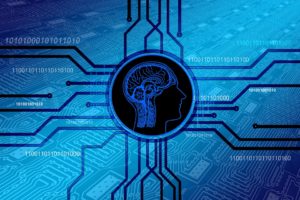Machine Learning vs. Artificial Intelligence: What is the difference?
The terms Machine Learning and Artificial Intelligence seem to be used interchangeably. While they are interrelated and complement each other, their definitions and application differ. In this article, we will explore the technical difference between Machine Learning vs Artificial Intelligence, and how they work together to build a better world. Artificial Intelligence was first defined in 1956 by John McCarthy. McCarthy defined the term AI to describe machines that can “perform tasks that are characteristic of human intelligence. Artificial Intelligence can be generally applied. General Artificial Intelligence is when a machine can perform an array of intelligent tasks while Applied Artificial Intelligence is when a machine is programmed to perform a single task.Machine Learning was defined three years later in 1959 by Arthur Samuel. Samuel defines machine learning as the “ability to learn without being programmed.” Machine Learning allows computers to process information, analyze the information and receive feedback on the analysis. Image processing is an example of machine learning. Kamelia Arafar, Ph.D. provides the following example to illustrate Machine Learning:“If we plug several photos of cats doing different things or in different places into a computer, but all the photos are still tagged as cats, then the computer will learn from each photo it is shown,” said Kamelia Aryafar, Ph.D., director of machine learning at Overstock. “Eventually, it will recognize that the cat is the common denominator in each set of data, in turn helping the computer learn to identify cats.” How do Machine Learning & Artificial Intelligence work together to create a better world? Amazon Alexa and other personal assistants are excellent examples of Machine Learning and Artificial Intelligence working together. The Artificial Intelligence aspect of Amazon Alexa is the overall general functionalities that represent human intelligence. These include the ability to listen, to process human speech and to provide accurate responses. The Machine Learning aspect is the ability to identify the voices of different individuals and to learn from misinterpretations of speech.
How do Machine Learning & Artificial Intelligence work together to create a better world? Amazon Alexa and other personal assistants are excellent examples of Machine Learning and Artificial Intelligence working together. The Artificial Intelligence aspect of Amazon Alexa is the overall general functionalities that represent human intelligence. These include the ability to listen, to process human speech and to provide accurate responses. The Machine Learning aspect is the ability to identify the voices of different individuals and to learn from misinterpretations of speech.
As you see, Machine Learning enhances the intelligence of Artificial Intelligence. While AI can exist without Machine Learning, ML allows AI to achieve new frontiers.
NeuroChain, let’s build a better world!
Photo credits: FreepikFollow us on Telegram, Facebook, Twitter and YouTube. If you have any questions, feel free to get in touch with NeuroChain Team, and we will answer you as soon as possible!
